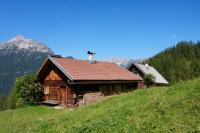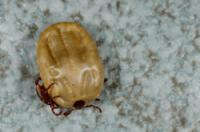VIDEO: Baking Soda and Baking Soda
First this: baking soda (or just baking soda) is not the same as baking soda. However, both powders can (if necessary) be substituted for each other. If you have both at hand, follow the recipe.
Baking soda or baking powder - this is how it is used
Recipes for many flat baked goods (gingerbread, special cookies), but sometimes also for muffins, use a mixture of baking soda and baking powder as a leavening agent. Even old recipes often contain baking soda or deer horn salt or potash as a leavening agent. You ask yourself whether you can replace the two powders for each other?
Baking powder is an invention of the 19th century. Century. Many old recipes simply did not know this easy-to-use powder. Here you can confidently replace: For 500 grams of flour you need a packet of baking powder.
You must not forget, however, that baking powder "works" in two phases: when mixing the dough in the presence of water (propulsion) and when baking, when heated (propulsion). For baked goods that do not rise too much or for doughs that are supposed to have a more compact consistency, it may well be desirable to do without jacking. Muffins in particular shouldn't be too fluffy. Here you will find recipes that use a mixture of both propellants.
However, if you don't have baking soda at home, then just replace it with baking soda. A rule of thumb is: a little more baking powder than the stated amount of baking soda. However, you can also replace it one-on-one so that the dough doesn't become quite as fluffy.
Baking powder as a reliable baking agent has become an indispensable part of everyday life. …
Baking soda - what is it?
Baking soda is chemically sodium hydrogen carbonate (NaHCO3) and is often referred to as bicarbonate of soda. You can buy it as a white powder under the name "Kaisernatron" in sachets, for example.
Soda releases carbon dioxide when heated, which explains its use as a leavening agent for baked goods, especially before the "invention" of baking powder. If the white powder is brought into contact with an acid (vinegar, lemon juice), carbon dioxide is also formed with effervescence. You can do this simple experiment yourself in a small glass. The solution then no longer tastes sour. So baking soda neutralizes acids and is therefore often taken in the event of stomach problems due to over-acidity (old Home remedies of grandmothers). Stale beer can (forbidden) be "freshened up" with a little baking soda.
Baking powder - a derivative of baking soda
Mixtures of baking soda and solid, i.e. crystalline, acids or salts are used in baking powder, bath tablets and vitamin effervescent tablets. Ultimately, baking powder, also packaged as a white powder in sachets, is a derivative of baking soda used as a leavening agent.
When using baking soda as a leavening agent, there are basically two disadvantages: It disintegrates when heated (i.e. only during the baking process) in soda, water and carbon dioxide, so it only drives the cake when it is baked above. This also creates soda and water. Another disadvantage is that soda gives the baked goods an unpleasant, bitter or burning taste.
It is therefore beneficial to use baking soda in conjunction with acids that prevent the formation of soda and also initiate a cold reaction (see above). In this way, the cake batter is swollen as soon as it is being mixed.
The well-known baking powder "Backin", for example, is a mixture of baking soda, a weak acid in crystalline form such as sodium dihydrogen diphosphate (Na2H2P.2O7) and starch powder. The acidic phosphate releases carbon dioxide partly during the preparation of the dough by adding liquid, and partly only when it is heated up in the oven. The starch acts as a release agent so that no premature decomposition occurs. For this reason, baking powder must be kept dry! Tartar baking powder contains tartar (C.4H5O6K) or tartaric acid.
Since both substances are similar, you can replace baking powder with baking soda plus acid or, conversely, add a slightly lower dose of baking powder than is required according to the recipe of baking soda.



